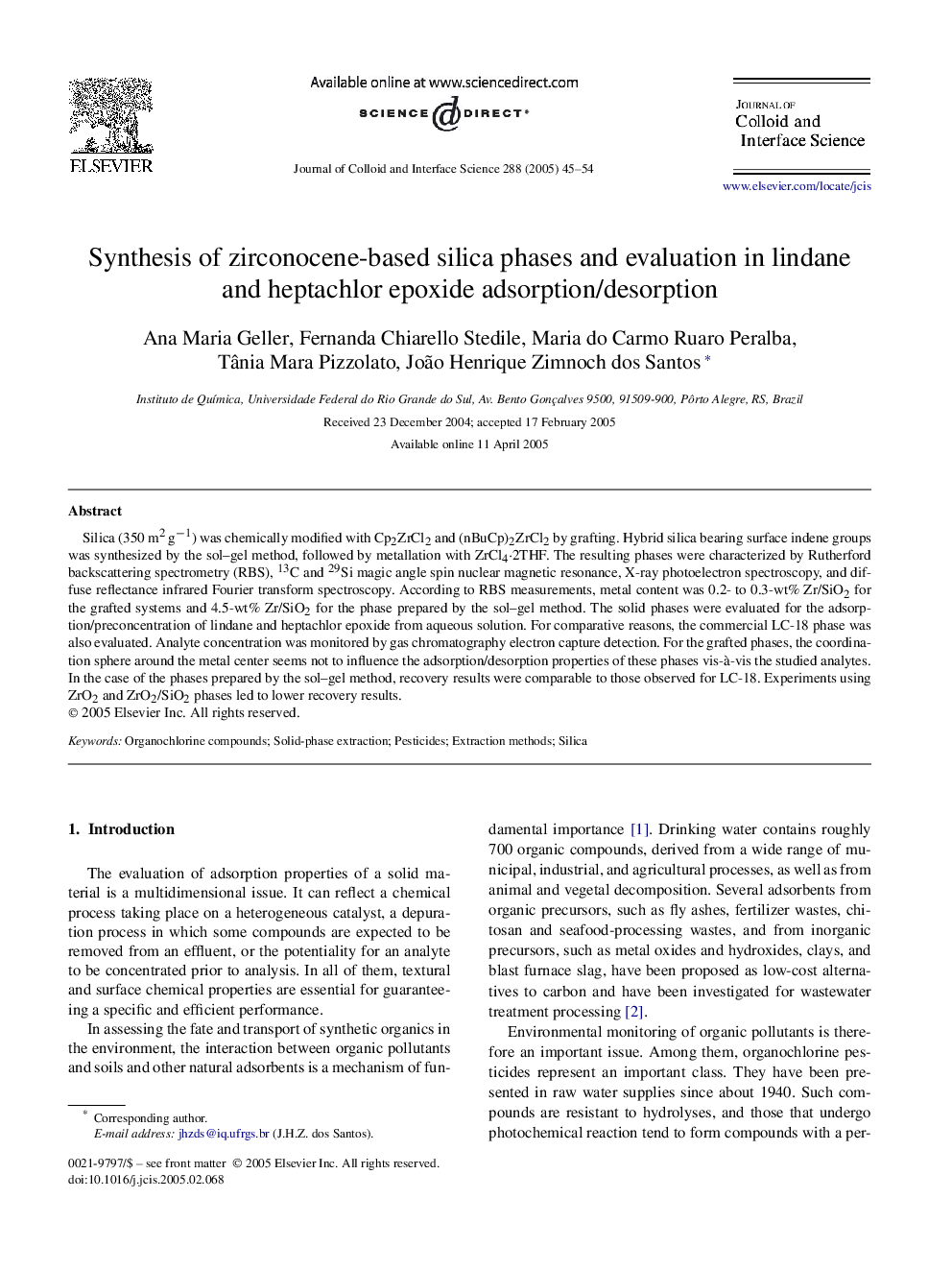| Article ID | Journal | Published Year | Pages | File Type |
|---|---|---|---|---|
| 10377854 | Journal of Colloid and Interface Science | 2005 | 10 Pages |
Abstract
Silica (350 m2âgâ1) was chemically modified with Cp2ZrCl2 and (nBuCp)2ZrCl2 by grafting. Hybrid silica bearing surface indene groups was synthesized by the sol-gel method, followed by metallation with ZrCl4â
2THF. The resulting phases were characterized by Rutherford backscattering spectrometry (RBS), 13C and 29Si magic angle spin nuclear magnetic resonance, X-ray photoelectron spectroscopy, and diffuse reflectance infrared Fourier transform spectroscopy. According to RBS measurements, metal content was 0.2- to 0.3-wt% Zr/SiO2 for the grafted systems and 4.5-wt% Zr/SiO2 for the phase prepared by the sol-gel method. The solid phases were evaluated for the adsorption/preconcentration of lindane and heptachlor epoxide from aqueous solution. For comparative reasons, the commercial LC-18 phase was also evaluated. Analyte concentration was monitored by gas chromatography electron capture detection. For the grafted phases, the coordination sphere around the metal center seems not to influence the adsorption/desorption properties of these phases vis-Ã -vis the studied analytes. In the case of the phases prepared by the sol-gel method, recovery results were comparable to those observed for LC-18. Experiments using ZrO2 and ZrO2/SiO2 phases led to lower recovery results.
Related Topics
Physical Sciences and Engineering
Chemical Engineering
Colloid and Surface Chemistry
Authors
Ana Maria Geller, Fernanda Chiarello Stedile, Maria do Carmo Ruaro Peralba, Tânia Mara Pizzolato, João Henrique Zimnoch dos Santos,
